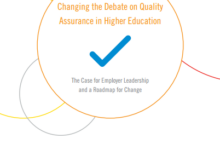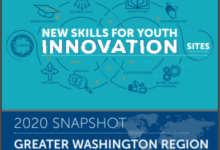Initially conceptualized in 2012, Core Plus was developed through a partnership between the Washington Office of the Superintendent of Public Instruction (OSPI), the Boeing Company and the Manufacturing Industrial Council. The program was designed to boost the number of Washington students graduating with knowledge in manufacturing and skilled trades and demonstrates how effective employer engagement contributes to higher standards, industry alignment and more opportunities for learners.

With more than 71,000 employees in Washington State, many of whom graduated from the state’s public schools, the Boeing Company has a vested interest in improving the rigor and quality of public education in Washington. Boeing staff recognized the opportunity to directly influence what students were learning in the classroom. In 2012, Boeing, OSPI and the Manufacturing Industrial Council formed a partnership to identify the knowledge, skills and abilities students would need to be prepared for entry-level work in the manufacturing field.
The Core Plus curriculum is built around such knowledge, skills and abilities. The curriculum spans a two-year sequence covering up to 540 hours of instruction on basic knowledge needed in the manufacturing field (the “Core” part of the program) and another 540 hours on occupation-specific instruction in aviation, marine technology, construction, medical devices and agricultural mechanics (the “Plus” part of Core Plus).
Integrating Core Plus into State Graduation Requirements
Washington state law enables individual districts to apply for waivers to the state’s high school graduation requirements. However, the Core Plus and other Career Technical Education (CTE) courses initially did not meet core academic requirements, even though students in these courses are exposed to rigorous instruction in math and science. To address this issue, the Washington State legislature in 2014 passed SB6552, authorizing the State Board of Education to develop course equivalency frameworks for CTE courses. Under the statute, frameworks would need to be developed through technical workgroups, meet rigorous academic learning requirements and be aligned with industry standards. The resulting frameworks would enable students in Core Plus and other CTE courses to apply their credits toward graduation requirements, empowering more students to pursue high-quality career pathways.
In May 2015, the State Board of Education approved the first round of course equivalency frameworks, identifying 21 courses that would be eligible for credit in math and science. In addition to mapping specific course codes to graduation credit requirements, the frameworks identify the industry and state learning standards and outline the instructional curricula for each eligible course. The following year, the Board approved an additional 11 course equivalency frameworks. As of February 2019, there are a total of 38 approved CTE courses that would be eligible for credit in math, science and English. Of those, seven are Core Plus courses.
Policy in Action
Today, the Core Plus curriculum is taught in 11 skill centers and 26 comprehensive high schools across Washington state. Additionally, Washington State plans to create a Core Plus teaching certificate for teachers who complete a Core Plus professional development program and are prepared to teach the rigorous curriculum. So far, more than 55 teachers have completed training on the Core Plus knowledge, skills and abilities.
Boeing further validated the relevance of the Core Plus curriculum by recruiting Core Plus students to work for Boeing right out of particpating Washington high schools, demonstrating that the curriculum could effectively prepare learners for entry-level employment in the manufacturing field.
Related Links
- Webiste: Core Plus Website
- Video: Core Plus Educators
- Resource: CTE Course Equivalency Frameworks
- Article: “Boeing hires students straight from West Valley High School” (October, 2017)
- Article: “Focus on the Classroom: Boeing’s Core Plus Program Takes Off” (February, 2017)
Last Updated August 2021





